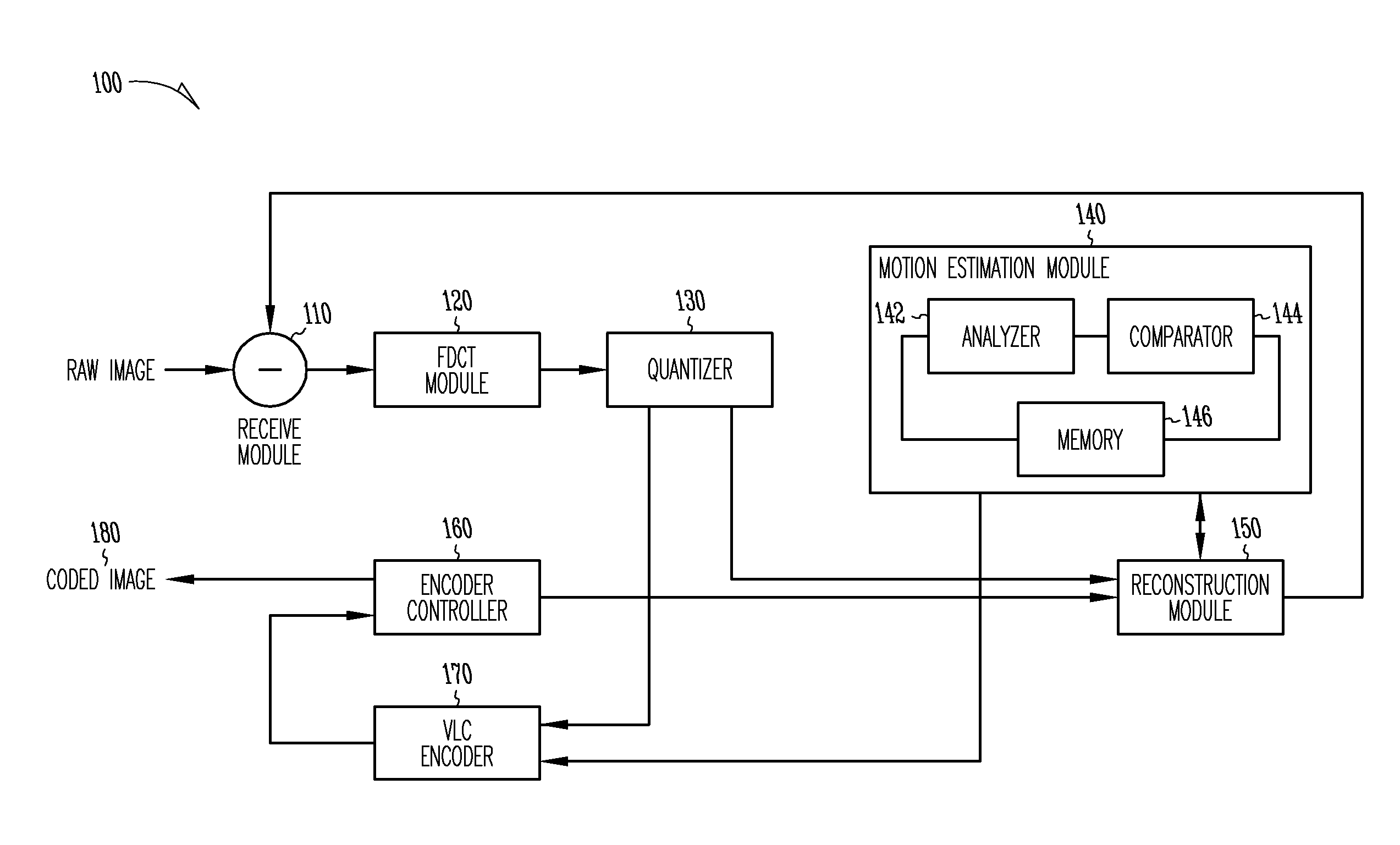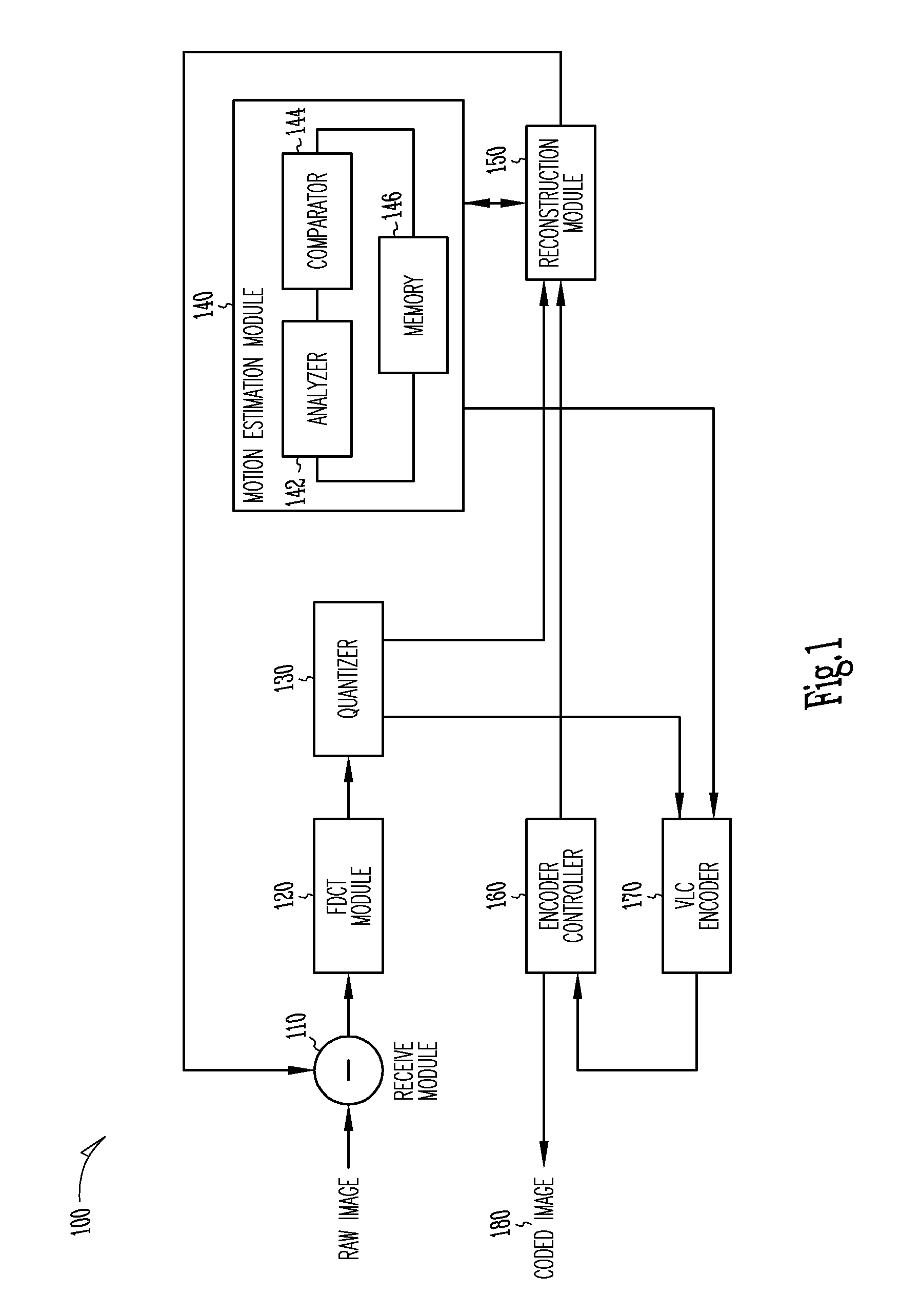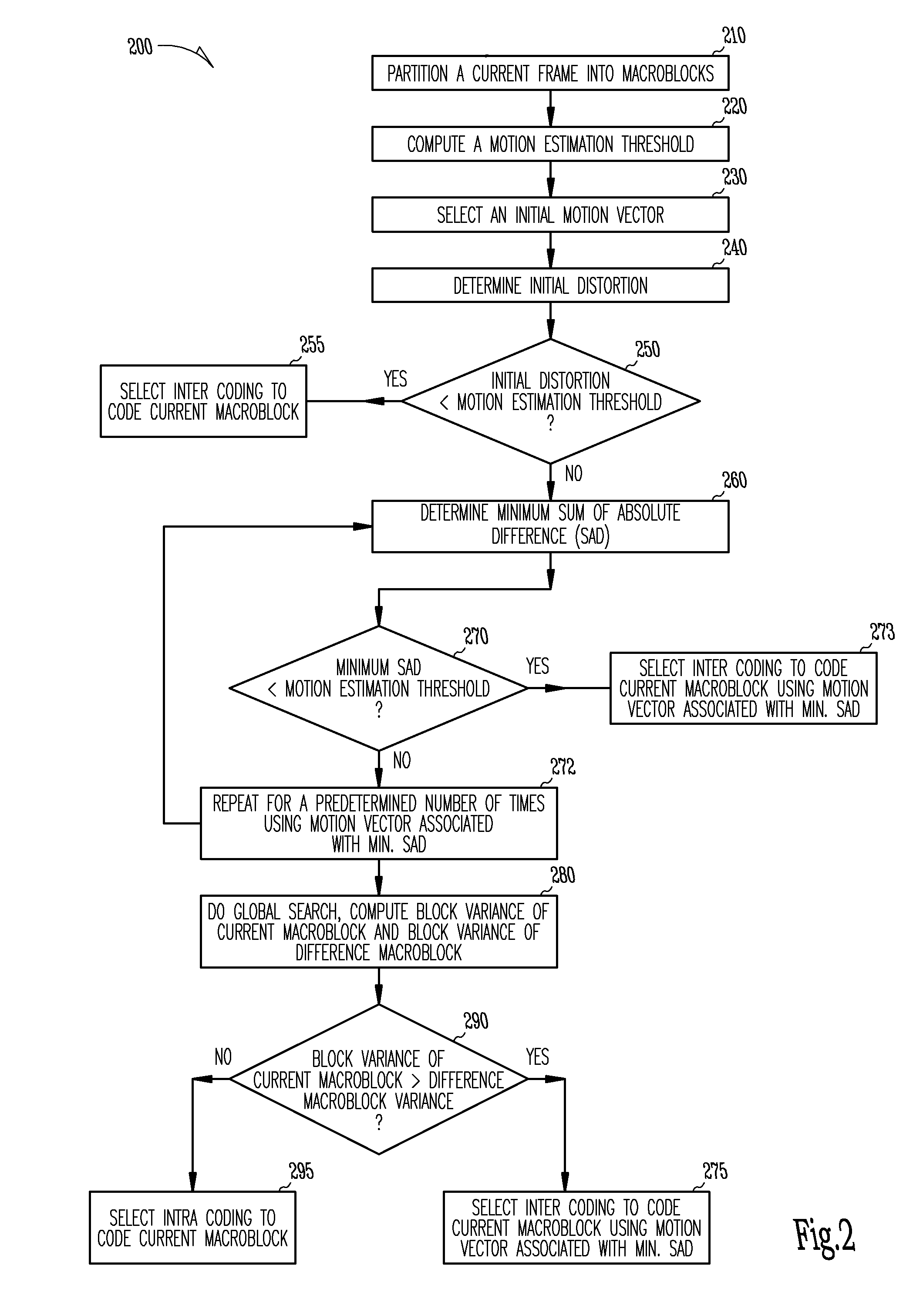Motion estimation technique for digital video encoding applications
a motion estimation and video encoding technology, applied in the field of digital video encoding techniques, can solve the problems of affecting the quality of motion estimation search process,
- Summary
- Abstract
- Description
- Claims
- Application Information
AI Technical Summary
Benefits of technology
Problems solved by technology
Method used
Image
Examples
Embodiment Construction
[0017]The present invention provides an efficient digital video compression technique that enhances encoder performance without compromising the quality of the compression during motion estimation. Also, the technique enhances encoder performance without increasing the search time for a motion vector. In one embodiment, this is accomplished by providing a computationally efficient processing technique to compute a frame-to-frame macroblock based motion vectors of digital images. The improved encoder receives a raw image in the form of a current frame. The encoder then performs an initial local search around an initial motion vector candidate derived from spatio-temporal neighboring macroblock parameters. The encoder then compares the user-defined complexity scalable sum of absolute difference between the original and the associated reference macroblock against an adaptive threshold value for motion estimation convergence. If the initial local search fails, the encoder then introduce...
PUM
 Login to View More
Login to View More Abstract
Description
Claims
Application Information
 Login to View More
Login to View More - R&D
- Intellectual Property
- Life Sciences
- Materials
- Tech Scout
- Unparalleled Data Quality
- Higher Quality Content
- 60% Fewer Hallucinations
Browse by: Latest US Patents, China's latest patents, Technical Efficacy Thesaurus, Application Domain, Technology Topic, Popular Technical Reports.
© 2025 PatSnap. All rights reserved.Legal|Privacy policy|Modern Slavery Act Transparency Statement|Sitemap|About US| Contact US: help@patsnap.com



